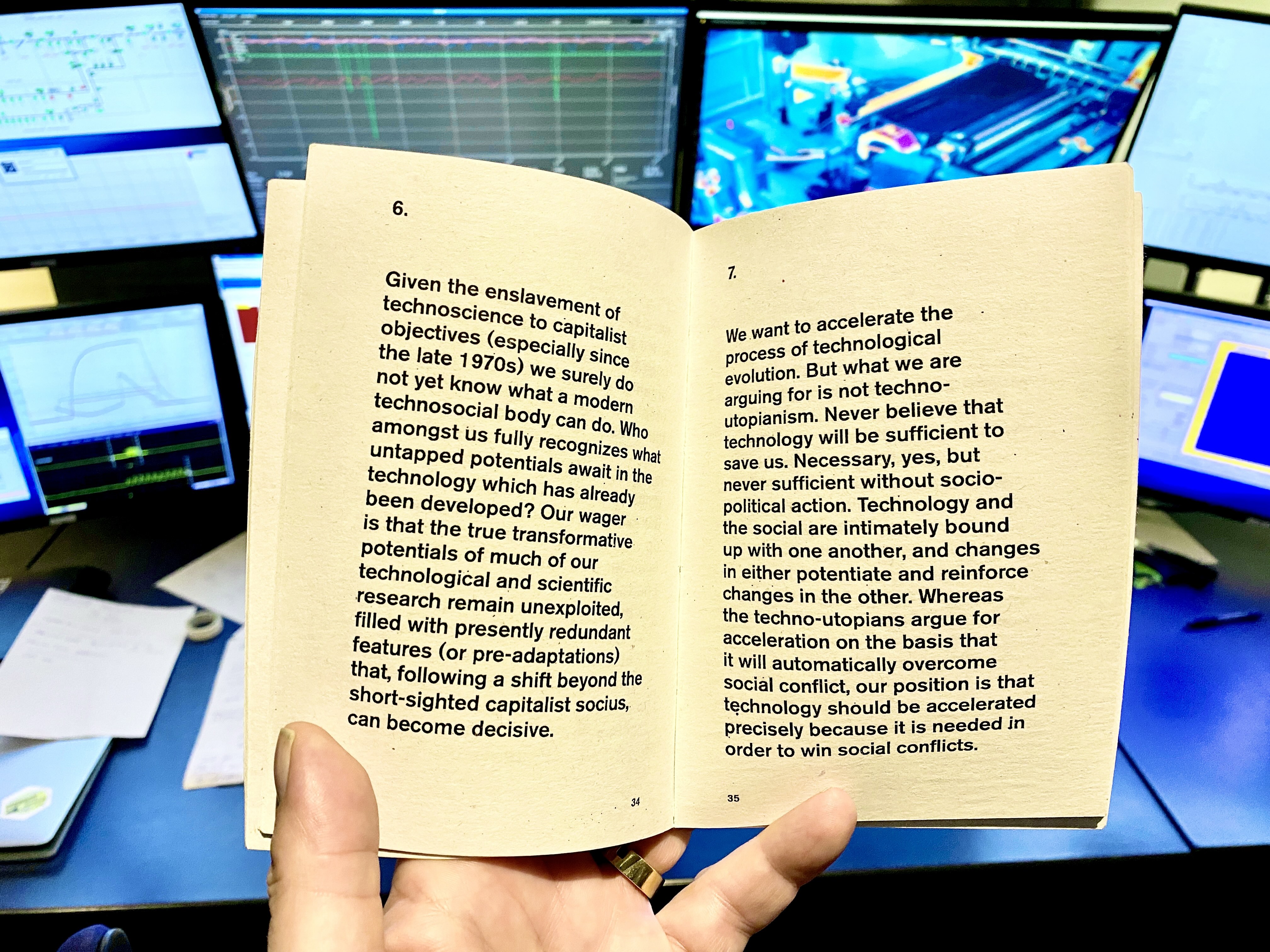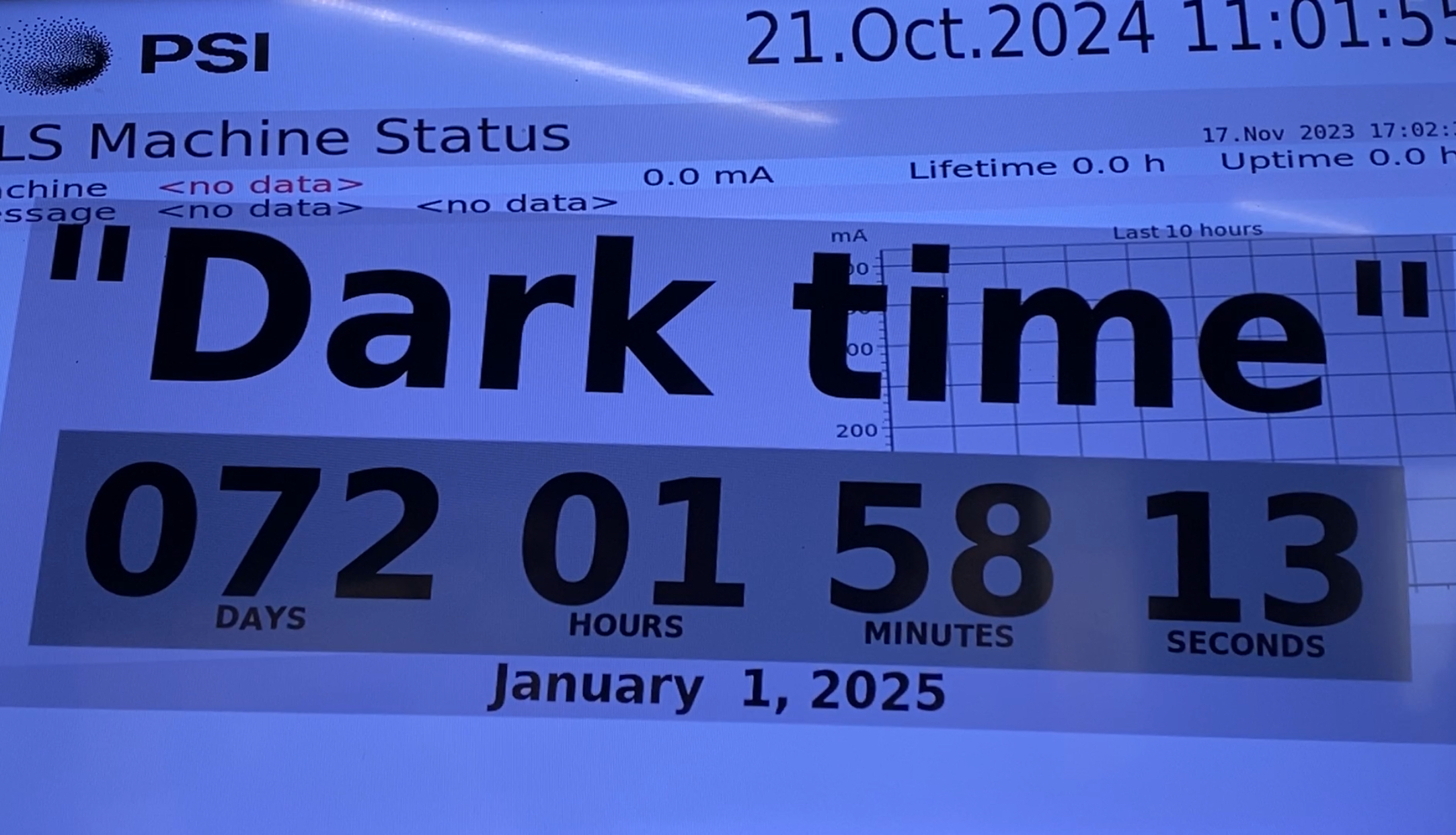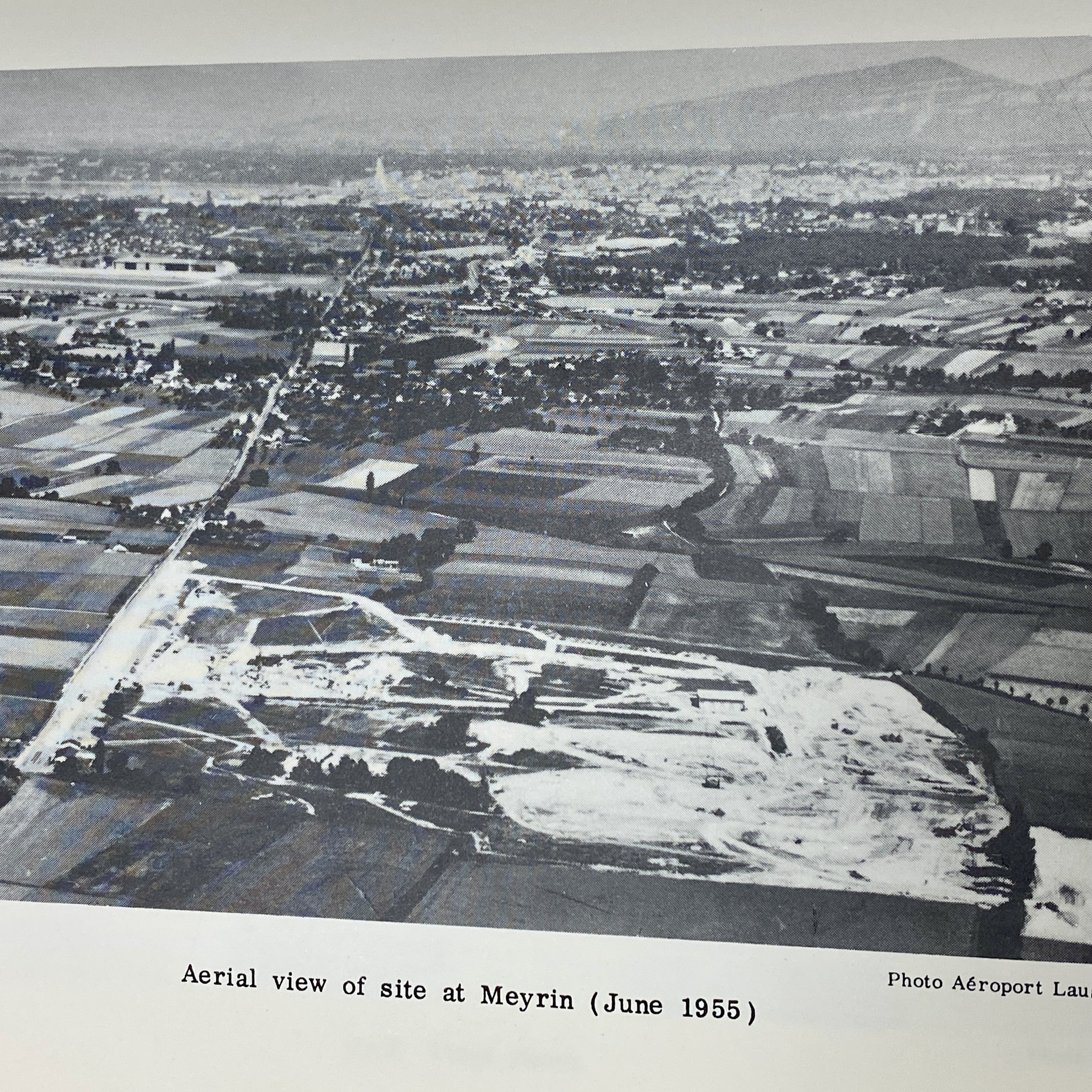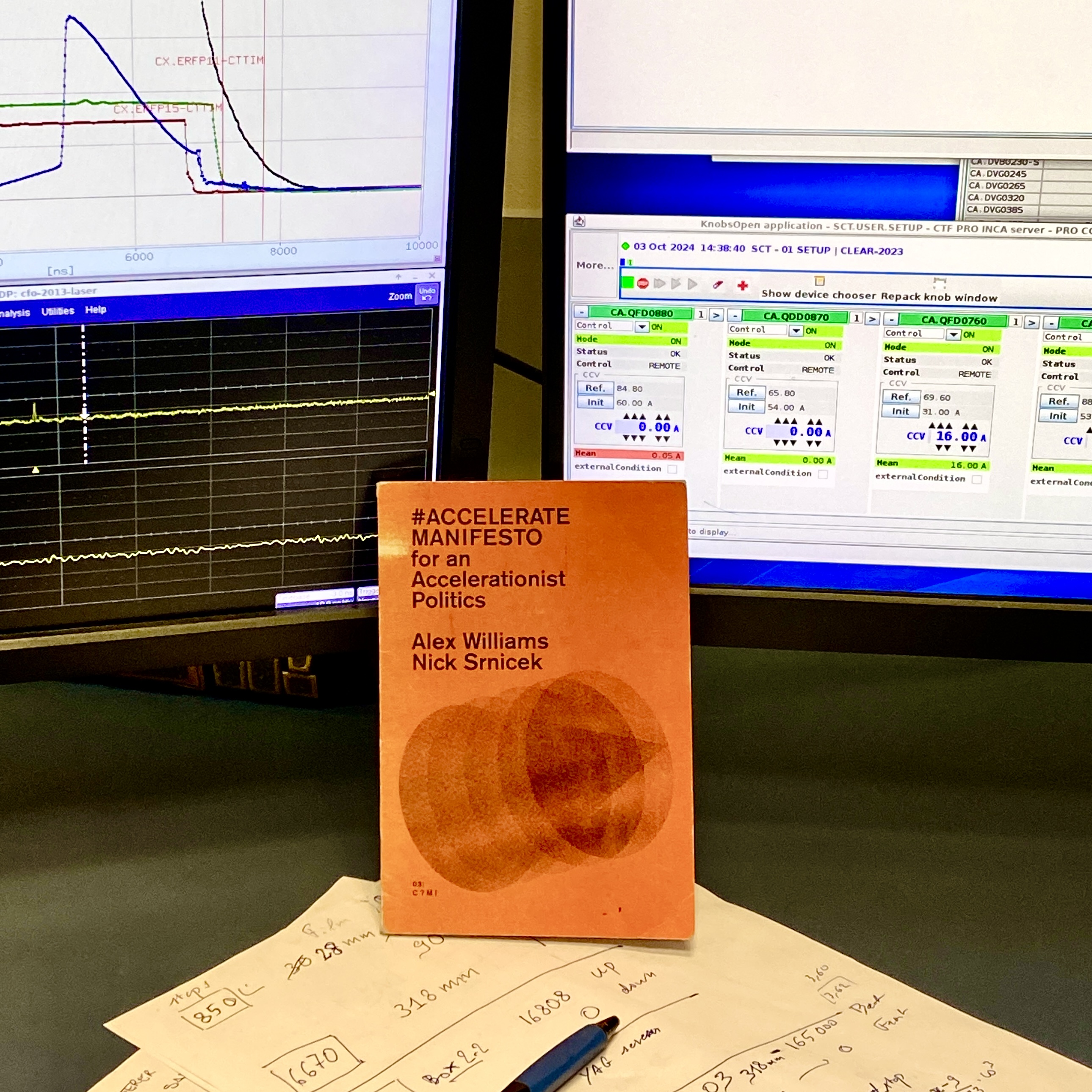
How do you future-proof the future?
This question has been weighing upon me since I stared at CERN; like a Zen koan, it doesn’t quite make sense; it eats itself like a snake devouring its tail. How can you protect the future from the future?
Strangely, aside from the writings of Wolfgang Pauli, the only other books I read were the CERN founding speeches, featuring the first Director of CERN Felix Bloch speaking on creativity in art and science and the importance of collaboration – this he put into a time capsule placed under the CERN foundation stone (which i spent a few weeks trying to find, another tale to be told later maybe). But his call to collaborate resonated with me – this is something that science has lead the way on, and perhaps it is time for large scale art collaborations. The other book was the “Accelerate Manifesto”, which was hanging around in the CLEAR control room, . Perhaps, as CLIC is / was part of an alternate future CERN, they have a kind of anarchistic freedom to do all sorts of experiments, freed from the control of bureaucratic systems necessary for projects such as the LHC and FCC.
Can you anticipate uncertain futures? This is where “accelerationism” resonates – however accelerationism can be dangerous medicine, like snake poison as anti-venom. Initially developed as a very left post-anarchist conceptual framework for challenging the all-consuming juggernaut of capitalism, this movement has bizarrely become associated with ultra-right nihilist idiocy. Yet radical times require radical medicine, and we have to be prepared, as we have been so long, for all sorts of situations, especially when faced with far-right political spasming into the mainstream across the globe, manifestations of the evil of banality, signs of dark times. A way to beat such extremism is to creativity anticipate extreme possibilities, through speculative accelerationisms.
I found another seemingly paradoxical condition at CERN – larger and more complicated accelerators are easier to make. Why? Because in CERN’s early days they had to create completely new inventions and infrastructures. There are now complex bureaucratic infrastructures that allow for massive projects that were never possible. So the bigger and more complex the project is, the easier it is to do (at least according to some). But aside from that magic magnet, all I saw of the FCC were PPT slides, plus a strange silence or void where any concrete data might be.
And yet this is what the FCC and indeed moving into the future is about, embracing the unknown and “welcoming uncertainty” as art/science champion astronomer Roger Malina states. The LHC was built to test predictions which were raised half a century ago. The FCC proposes to push us beyond the standard model, into truly unpredictable realms of the subatomic universe. As Patti Smith said “I want to go beyond the beyond”.





